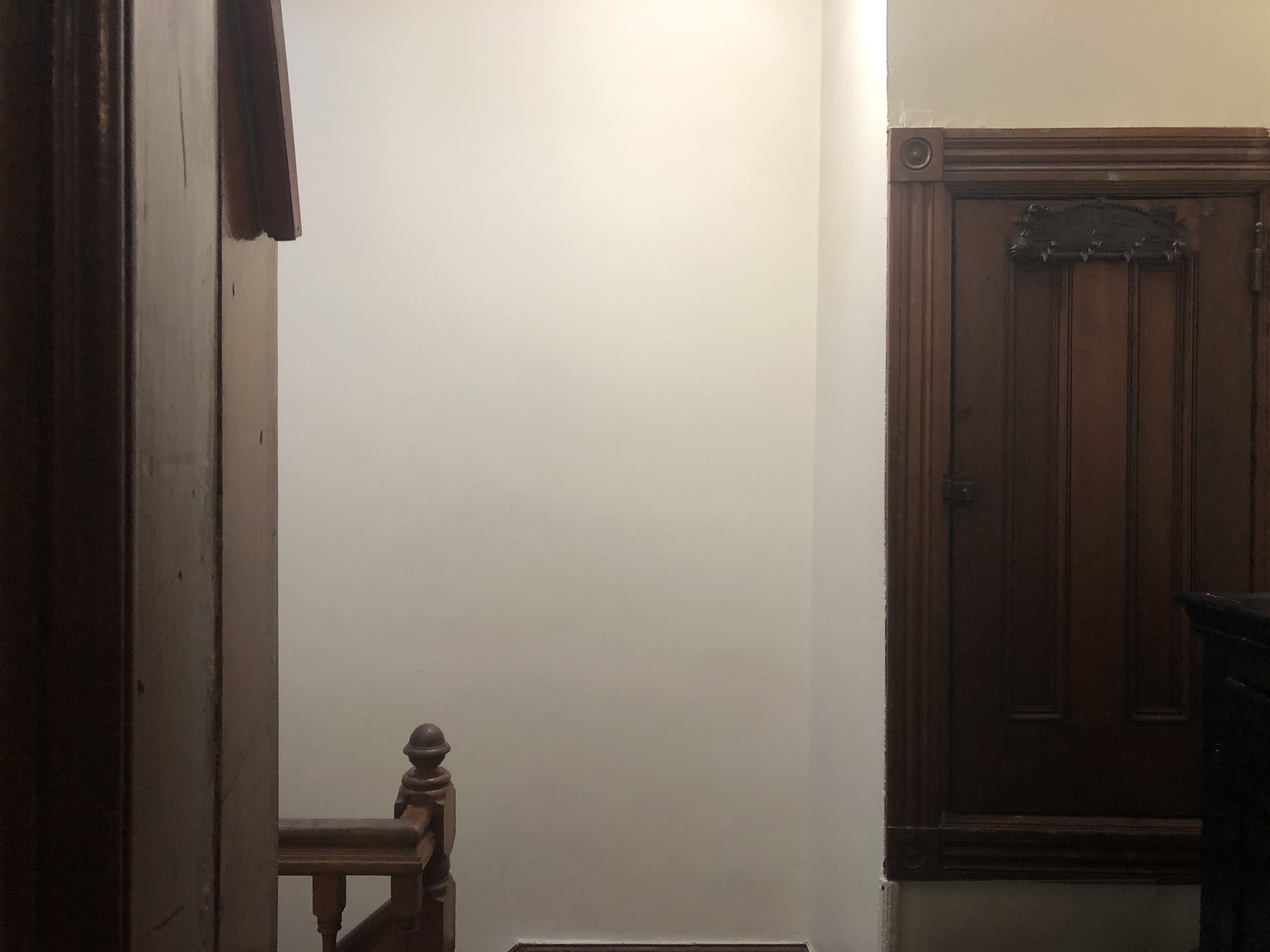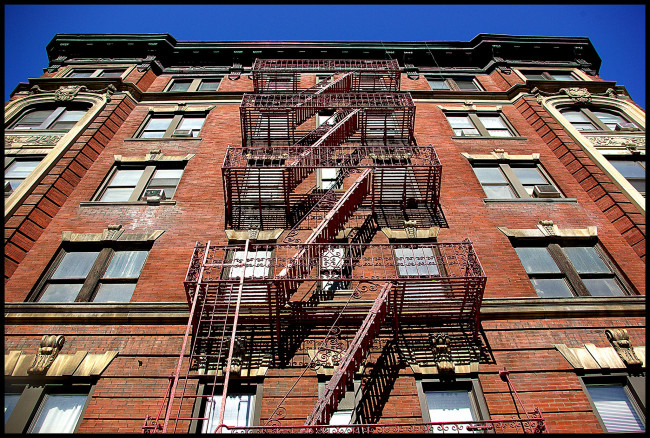Is your dumbwaiter a firetrap? Here’s what you should do to protect yourself

A townhouse for sale in Manhattan has a dumbwaiter in the dining room, to the left of the table. A recent fire in a Park Slope townhouse was accelerated via that building's dumbwaiter shaft.
After a fire gutted a Park Slope brownstone a few weeks ago, officials explained how the flames began at ground level but quickly spread through a dumbwaiter shaft to the upper floors. It’s unclear what started the fire, but the antique shaft likely acted as a flue, allowing the flames to quickly spread throughout the house.
The mechanical dumbwaiter—invented by a New Yorker in 1887—is a small freight elevator installed when society looked very different from today. They were popular at a time when, in some households, the cooking was done on a different level from the dining room. Food, laundry, coal, and firewood were all hoisted up to living areas from the ground-floor servants' quarters below.
If you live in a multi-family walk-up that still has a dumbwaiter, you probably wish you could get it working to haul your groceries up to your apartment, but it's safer to have it closed off. Jim Bullock, co-owner of NY Fire Consultants and a former FDNY department chief, says sealing off a dumbwaiter with double layers of sheetrock is the best option. This means if there is a fire, you'll have more time to prevent it from spreading throughout the building.
Removing a dumbwaiter
In NYC, you want all the space you can get, so repurposing a dumbwaiter is a popular choice for anyone renovating a townhouse. Ward Welch, the principal at CWB Architects, says the extra three feet of space in the kitchen can mean "a better layout is possible." Wine storage or appliance garages are a popular way of reusing the space on the ground floor, and additional closet space is a popular use for the upper floors.
You never want to create "chimney situations," says Ward. That means if the shaft isn't removed and incorporated into the living space, it should be sealed on every floor to prevent air from circulating upwards.
Bullock recommends removing the door and molding and putting two layers of sheetrock on all sides. "It needs to be completely sealed with no openings," he says.
Living with a dumbwaiter
If you decide to keep a dumbwaiter rather than sealing it off, it will need to be brought up to code. “Any shaft that exists over multiple floors in a building is required to be fire-rated," says Rachael Stollar, senior project manager at CWB Architects.
Welch says clients often like the idea of a dumbwaiter and in some cases, he has removed the old product, created a code-compliant shaft and installed a new mechanism. He says the new mechanisms take up more space than the old ones and some people later admit they never use it.
"They tend to be used so irregularly that they have problems because they just sit there and people don’t realize that something is wrong and they should be looked at," says Welch.

Under the Multiple Dwelling Law, dumbwaiter shafts built after 1929, except those in public areas, need to have walls of gypsum plaster blocks and doors with an interior lock operated and controlled from a central point in the cellar or lowest story of the building.
It's not uncommon to find residents using the dumbwaiter as a shelf, says Bullock. He says it's important to keep in mind that it's still an open shaft and like any cavity that runs from the ground floor to the top, it can allow fire to spread more quickly if it is not closed off.
In some apartment buildings, the dumbwaiter is repurposed as a garbage chute and there are rules surrounding this that state that in these cases, all waste needs to be collected daily.
"A dumbwaiter is essentially an elevator and needs to be maintained on an ongoing basis," says Stollar.



























